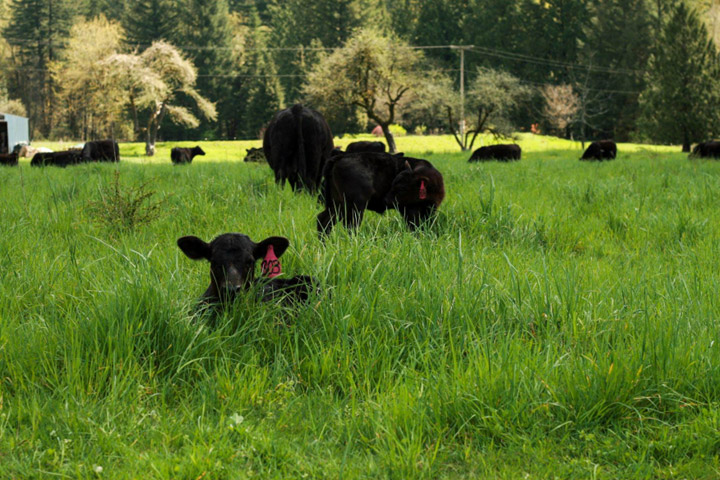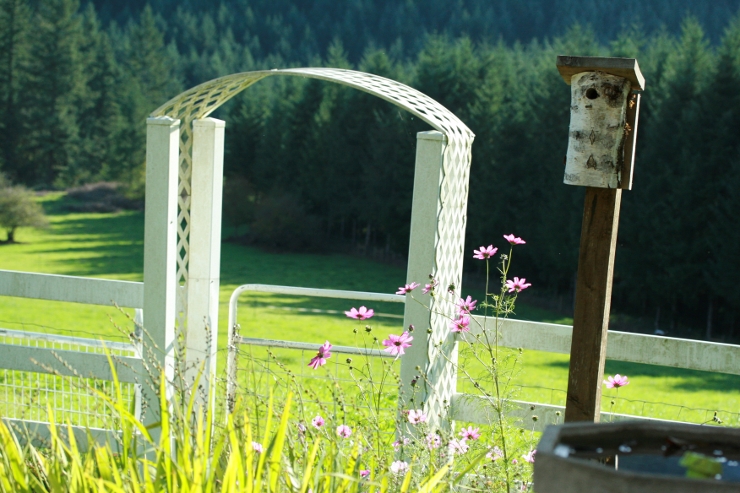Frequently Asked Questions
Some common questions our customers ask.

How many acres do your cattle graze on?
Since, we are a self-grown cattle operation (no property was handed down to us), we initially used the 20 acres we started on for our cattle. We quickly figured out that neighbors had pasture that was not being hayed and found out they were willing to have a few cattle on it, in order that their pastures could be mowed down. After this we looked into leasing some local fields to run our cattle on. These fields were not perfectly manicured fields when we found them. It was an adventure turning fields overgrown with brush and weeds into pastures for our animals. Meanwhile, we learned of a local hay farm that took great care in growing quality hay. We began using them to stockpile winter hay for our cattle. At the same time, we expanded leased pasture and were eventually able to buy some of our main leased pasture. With all of those properties combined we operate on about 250 acres.
Can I get bones or organ meat when I order a cow share?
Yes, you can. Your cattle share includes your share of the grass-fed bones and organ meat, if you so desire. Just make sure to ask your butcher!
Is there a cheaper way to just get ground beef?
Yes, there is. Occasionally, we will butcher a cow that is still of good quality, but no longer a good fit for our Cow/Calf operation. During this time, we will alert our customers of a “ground beef special”. Unfortunately, these specials usually go quick. You can still purchase ground beef by purchasing a quarter, half, or whole beef share and requesting the meat be ground into ground beef. However, that would mean that even the better cuts (tenderloin, rib steak, T-bone, sirloin, rump roast, etc.) would get turned into ground beef. A better idea is to take cuts you don't prefer as much and turn those into ground beef (round steak, chuck roast, tri-tip, brisket, etc.).
Is there something I can do with round steak?
Yes! Ask the butcher to tenderize your round steak. This cut is then called cubed steak. It makes delicious chicken fried steak!
Can I purchase some grass-fed tallow (beef fat)?
Most extra fat is used in the hamburger making process in order to produce a hamburger that is roughly 80/20 and good for burger making. That said, if you would like some grass fed tallow, ask the butcher if there is any extra and they can usually get you some.
How is a quarter beef divided? Do I get the front or back of the half of a beef?
Quarters are actually a half of a half. They are not the front or back section. So, when you order a quarter beef, you will get a half portion of each type of cut that would be in a half beef. It's a fair division of a half beef.
How much freezer space will I need to store my beef?
A half beef will take up approximately 10 cubic feet of freezer space and a quarter will use around 5 cubic feet of space. The typical kitchen fridge freezer compartment has about 5 cubic feet space, so a quarter beef can fit in there, if you use all the space and pack it efficiently.
Who does the cut and wrap and how is the meat packed?
We have options to butcher at Ward's Custom Meat Cutting and Butcher Boys. Ward's Custom Meat Cutting is located near us in Battle Ground, WA. Their number is 360-687-5225. They are a great local business and do most of our meat processing. They age the beef to bring out the best flavor and tenderness. All the beef is packed in air tight clear plastic to prevent freezer burn. All of the cuts are also labeled with the name of the cut. This method is so good at sealing the meat, that freezer burn just does not happen. Typically, the meat tastes fresh for a year or more! Butcher Boys is located in Vancouver, WA as a second option for our customers.
How much beef will I end up with after it is cut and packaged by the butcher?
When you purchase your share of a live beef animal from us, we have to sell it to you based on the “hanging weight”, which is the weight of the beef when it arrives at the local butcher shop, just after butchering.
The butcher will dry age the beef (for between 1-2 weeks), and then cut and wrap the beef according to your cutting instructions. After the butcher removes bones and any extra fat or trim from the dry aging process, the net weight you end up with should be about 65% of the hanging weight. So although it will vary, if the hanging weight of a quarter beef is 160 lbs, the net weight of the beef you put in your freezer should be approximately 104 lbs.
Check out this video that helps with many common questions!
How does your pricing work?
The very top question I receive from my customers is, “How does the pricing work?” This information can be found in various parts of our website, but how it all works out can be somewhat baffling. This is for a number of reasons.
First off, to reserve your beef, we only require a DOWN PAYMENT. This price is based on whether you are ordering a quarter, half, or whole animal.
Secondly, you pay us for your share of the hanging weight of the animal (before it is processed). You pay the slaughter fee for the slaughter truck to come out and butcher the animal. Then you pay the processing fee for the butcher shop to hang, age, and custom cut your animal. So, all of those together equal the total cost to you the customer. Generally, the total comes within the price of beef from the store, and much lower than the price of GRASSFED beef from the store. Additionally, you have an animal that was treated well and raised and butchered humanely in a field.
Your share of the hanging weight of the animal also has to be translated into how many pounds of meat you will receive. After the butcher removes bones and any extra fat or trim from the dry aging process, the net weight you end up with should be about 65% of the hanging weight, depending on the types of cuts you choose. So, although it will vary, if the hanging weight of a quarter beef is 155 lbs, the net weight of the beef you put in your freezer should be approximately 101 lbs.
How Pricing Works
| Size Of Share |
Deposit |
Average Hanging Weight |
Price |
Approx. Total Payment To Us |
Slaughter Fee |
Approx. Cutting/ Processing Fee @ $1.05/Lb (Wards) |
Approx. Total Including All Costs |
Average Net Weight After Cutting |
Approx. Price Per Net Pound (Cuts/Ground) |
| Quarter |
$250 |
155 Lbs |
$5.99 |
$928 |
$50 |
$163 |
$1141 |
101 Lbs |
$11.3 |
| Half |
$500 |
310 Lbs |
$5.84 |
$1810 |
$100 |
$326 |
$2236 |
202 Lbs |
$11.07 |
| Whole |
$1000 |
620 Lbs |
$5.69 |
$3528 |
$200 |
$651 |
$4379 |
404 Lbs |
$10.84 |
*Based on standard Angus cuts with an average hanging weight. Price will vary based on actual hanging weight.
Order Instructions
The basic ordering process
Order Timeline
Reserve your share online
Select the size of the share, the butcher and the batch month. Place your order online and pay the deposit. You can pay via credit card, ACH, or you can mail in a check. Your order is not secure until your deposit is received.
Wait for your share to be ready
Humane slaughter takes place on our farm, and your beef is delivered to the local butcher. Your name is placed on your specific portion of beef and we give the butcher your contact information. The butcher will contact you to get your cutting preferences. The butcher will age the beef for about 1-2 weeks before they cut it to bring out the tenderness and flavor.
Settle the balance
The butcher will weigh your portion of beef and provide us with the weight so we can calculate your bill with us, and we send your bill to you. You will need to pay your remaining balance with us before you can pick up your meat from the butcher.
Pickup Your Finished Beef
The butcher will let you know when your meat is ready, and you can come pick it up. You pay the processing costs to the butcher when you pick up the meat from them.
Enjoy Your Healthy Grass-Fed, Grass-Finished Beef!


